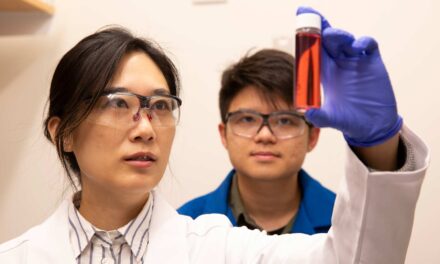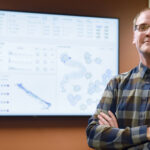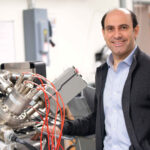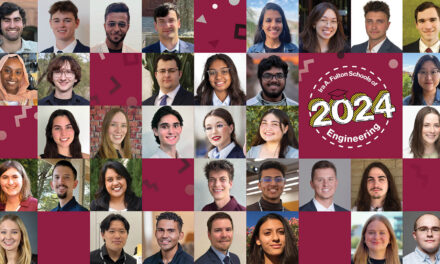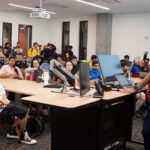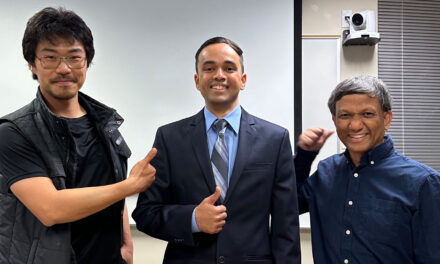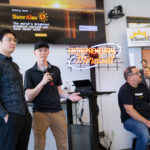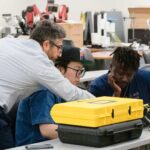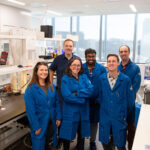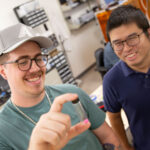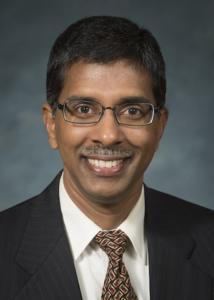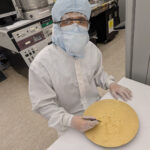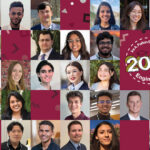
ASU set to play leading role in planning future of nation’s transportation systems

A new ASU research center will work to aid U.S. Department of Transportation efforts to improve how the nation’s local and regional transportation systems serve their communities. Photo: Shutterstock
Arizona State University researchers are poised to help boost innovation in the planning and design of future enhancements to the nation’s transportation systems.
ASU has been named the lead institution for a new U.S. Department of Transportation Tier 1 University Transportation Center that will focus on improving regional travel demand forecasting.
The center’s work will be part of a larger U.S. DOT program to develop new systems and technologies that provide better surface transportation mobility and accessibility across the country.
The new center, called the Center for Teaching Old Models New Tricks — or TOMNET for short — puts ASU in charge of a consortium that includes researchers at the Georgia Institute of Technology, the University of Washington and the University of South Florida.
It’s one of 20 Tier 1 centers recently awarded to universities around the country — selected from more than 200 proposals — and the first and only one to be led by an Arizona university since the inception of the University Transportation Centers program two decades ago. The new awards provide each of the Tier 1 centers $7 million over five years.
Combining complementary areas of expertise
TOMNET’s mission is to significantly improve data models and analytical tools that are used to plan transportation infrastructure, operate multimodal systems and optimize travelers’ movements in complex networks, says Ram Pendyala, the center’s director.
Pendyala is a professor in the Civil, Environmental and Sustainable Engineering program of the School of Sustainable Engineering and the Built Environment, one of ASU’s Ira A. Fulton Schools of Engineering.
The inspiration for the TOMNET center is drawn from the decades of complementary research and experience of Pendyala and Georgia Tech Professor Patricia Mokhtarian, the center’s research director.
While Pendyala brings deep expertise in the refinement of regional travel demand forecasting models, Mokhtarian has similar proficiency in the design and analysis of attitudinal surveys.
Together, Pendyala says, they have long felt the need to combine the strengths of their individual expertise for the improvement of regional planning, forecasting and policy making.
More than simply advancing the analytical aspects of forecasting models, Pendyala says, TOMNET will incorporate “human factors” into its research by exploring ways in which sociological and psychological aspects of people’s attitudes and values can be used in predicting transportation choices and mobility patterns.
“Attitudes, values and perceptions that people attach to transportation and lifestyle preferences have largely been missing in research and practice that seeks to devise better forecasts of travel demand,” he says.
“If we can find ways to successfully integrate these kinds of behavioral variables into our analytics, then I think we can make a quantum leap in our ability to predict future travel needs and desires,” he says.
Taking a multidisciplinary approach
Collaborations among ASU transportation engineers and researchers in a variety of other disciplines will be key to making that leap.
Computer science faculty members in the School of Computing, Informatics, and Decisions Systems Engineering, one of the Fulton Schools, will be providing the statistical matching, data fusion, machine-learning techniques and computational algorithms necessary to weave analytics and human behavior studies together in the formulation of new travel demand forecasting models.
Faculty in ASU’s School of Geographical Sciences and Urban Planning will be contributing their expertise, led by Assistant Professor Deborah Salon, who is TOMNET’s associate director.
Venu Garikapati, assistant research professor in the School of Sustainable Engineering and the Built Environment, is the center’s assistant director. He will work closely with Pendyala and the consortium of researchers to develop and test new travel forecasting models, coordinate the center’s research and education activities, and facilitate technology transfer.
The center’s work will have far-reaching applications across a number of disciplinary domains. For example, faculty in the School of Nutrition and Health Promotion, part of ASU’s College of Health Solutions, will explore the potential impacts of various transportation system infrastructure designs on public health and the livability of local communities.
Serving the needs of all
Pendyala points out that infrastructure planning and design are critical to providing transportation alternatives that enable people to access opportunities to engage in activities such as work, school, shopping and social recreation.
The center’s research team will include faculty with specific expertise in environmental economics. They will help assess the value that people attach to various facets of transportation systems and the implications for travel choices, willingness to pay for mobility options, and quality of life.
The plan is for TOMNET to work with the Maricopa Association of Governments — the regional planning agency for the greater Phoenix area —and other local and state agencies across the country to test the effectiveness and improved accuracy of the center’s innovative travel behavior models.
“Our aim is to help policy makers and regional agencies enhance their transportation system planning and development processes through human-centric travel forecasting that will be more accurate in its ability to predict traveler behavior under a wide variety of alternative futures,” Pendyala says.
An essential part of the center’s mission “is to help stakeholders meet the transportation needs of all people, regardless of their socioeconomic and demographic status, so that no one is excluded from accessing opportunities that urban environments provide,” Pendyala says.
Transportation infrastructure plays a major role in shaping a community’s access to employment opportunities, education and public services, he says, “so we want planners and policy makers to be able to see how their actions will affect different populations, especially those that are disadvantaged.”
Focus on education and outreach
TOMNET is equally focused on helping train the next generation of transportation professionals.
A significant portion of its funding will support efforts to attract undergraduate and graduate students into studies for transportation-related careers. There will also be educational outreach efforts in middle and high schools, with particular focus on fostering a future transportation workforce that is diverse and transdisciplinary.
Undergraduate and graduate students will be offered research assistantships through opportunities made possible by the center award.
TOMNET researchers plan to incorporate the activities of the center into the Fulton Schools’ Summer Transportation Institute, a weeklong education experience for high school students supported by the Federal Highway Administration.
The center also plans to host seminars and present webinars to enable academics and researchers to engage with transportation professionals, government agency officials and industry representatives.
Solidifying leadership position
ASU is joining some of the country’s most prominent research universities as leaders of the new Tier 1 University Transportation Centers. Each has a specific focus area ranging from aspects of transportation economics, governance, finance and sustainability to planning, design, energy resources and environmental health issues.
TOMNET is the only center whose focus lies entirely in the study of traveler behavior and values and the improvement of regional travel forecasting models through the application of innovative data analytics.
G. Edward Gibson Jr., director of the School of Sustainable Engineering and the Built Environment, says the selection of ASU to direct one of the centers “further establishes us as a national leader in transportation research and education.”



